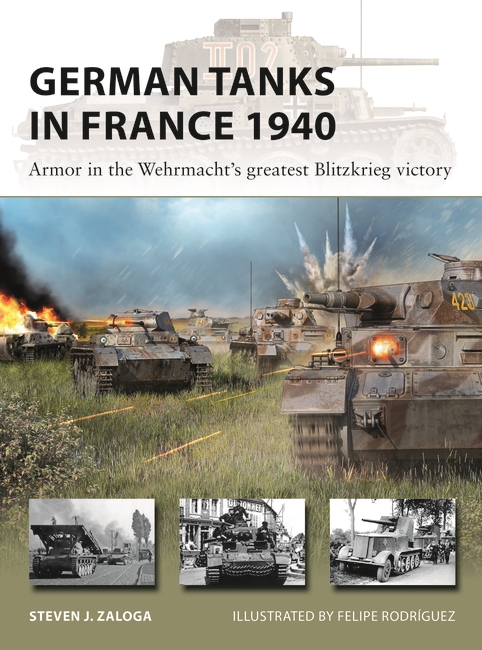
I’ve been fascinated by the Battle of France for many years after having read Alistair Horne’s classic “To Lose a Battle: France 1940” when it first came out in 1969. Osprey’s New Vanguard series editor, Tom Milner, has been encouraging me to write these “Tanks of…” titles so the Battle of France was a natural theme for me. I’ve already done two New Vanguards on French tanks of this period, as well as two Osprey Duels on tank engagements in the Battle of France.
In short survey books such as these, it is impossible to cover every major tank battle. So it’s necessary to concentrate on a particular aspect of the conflict. I tried to address two themes in this book, the large-scale tank battles in Belgium and the intensity of the tank combat as evidenced by German tanks losses.
Many history buffs seem to think that the Battle of France was a walk-over by the Wehrmacht. This was far from being the case. The world’s first large tank battles were fought in the Gembloux Gap in May 1940 by Panzer divisions against some of the French mechanized cavalry divisions. The results of these battles may surprise some readers.
German casualties in France in 1940 were much higher than the general accounts may suggest. German tank losses were nearly a third of the starting force, in a period of only about six weeks. Furthermore, those are what the Germans categorized as “Total Losses”, meaning tanks that were unrecoverable. This usually meant tanks that had been burned-out due to ammunition fires that made their armor worthless. It did not include all tanks that were knocked out in combat. So for example, a Panzer that was put out of action by a penetrating hit by a French tank gun was not counted as a loss if it did not burn and could be repaired. I located German records from 1940 to detail these issues.
Another novel aspect of the book is the excellent artwork by Felipe Rodna. Most depictions of German Panzers in this period show them in overall dark grey. But records indicate that they were finished in dark grey with dark brown camouflage. This is not apparent in black and white photos. Precise patterns cannot be determined from photos, but Felipe has done a superb job in providing a view of their likely appearance. Another detail that may surprise readers was the extensive use of air identification markings on German tanks during this campaign. So I hope that readers will find a good deal of fresh material in this book.
Find out more in German Tanks in France 1940.


Comments
You must be logged in to comment on this post. Click here to log in.
Submit your comment